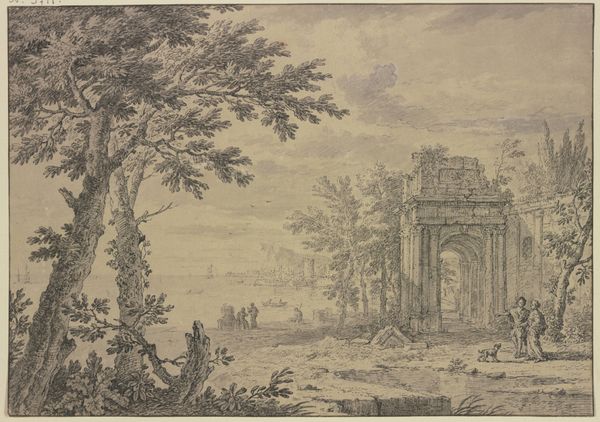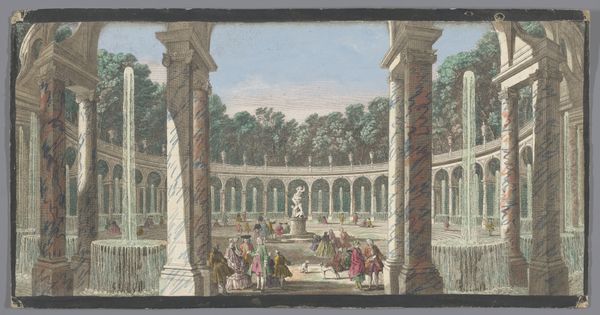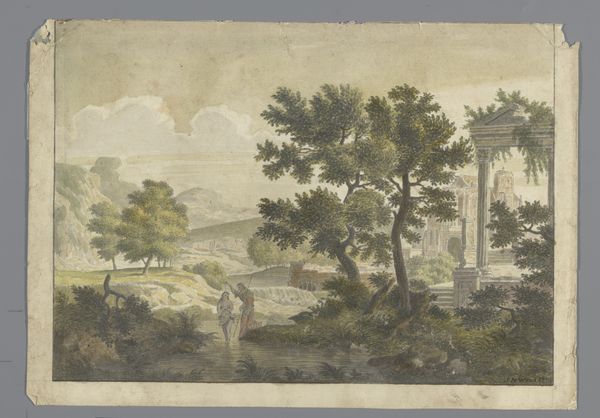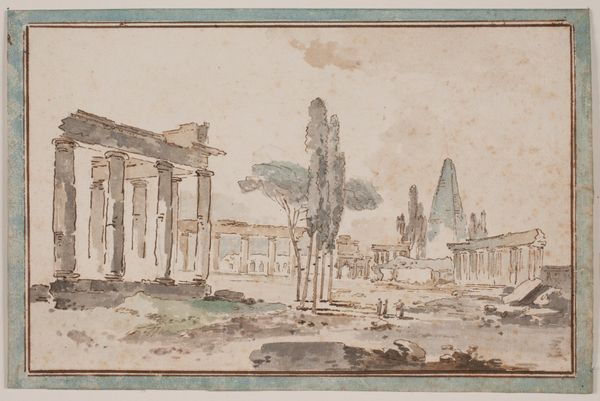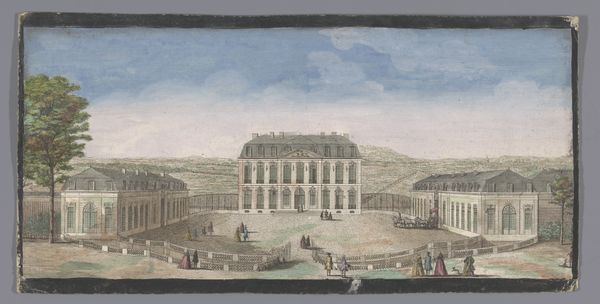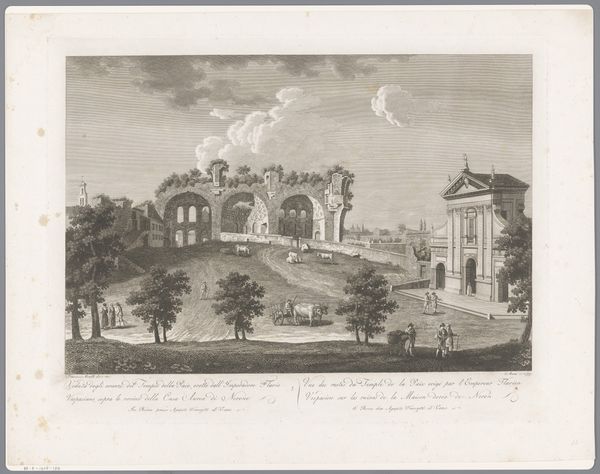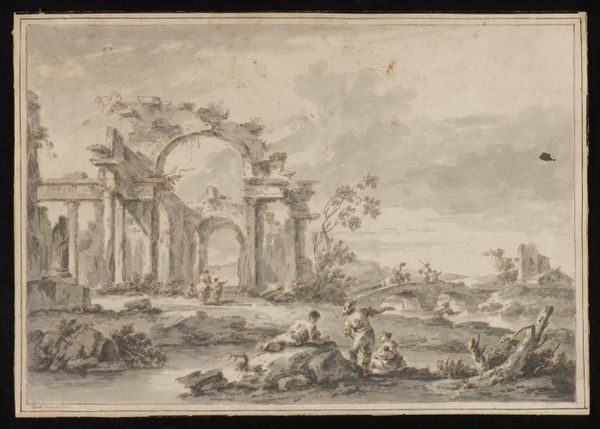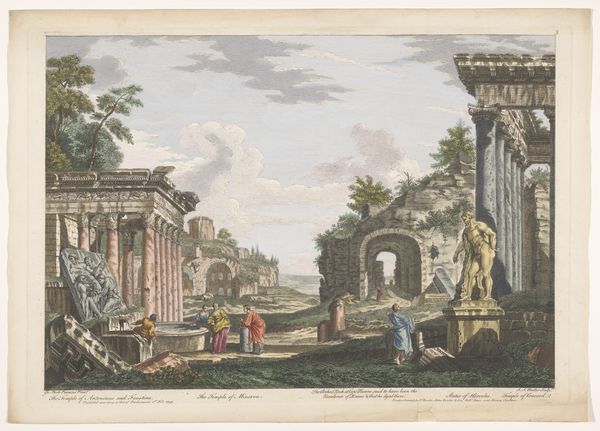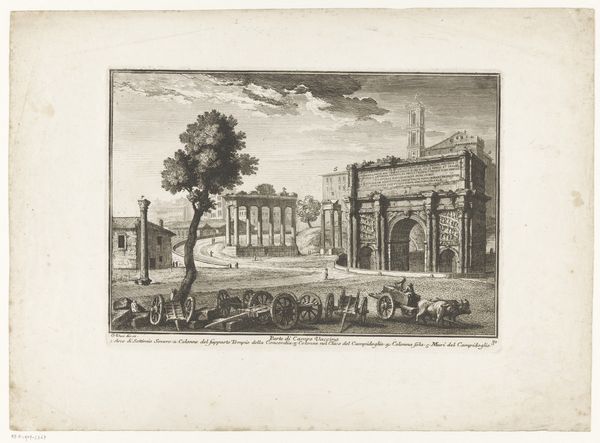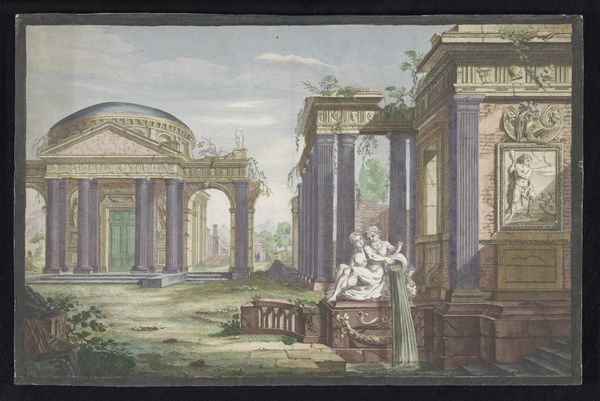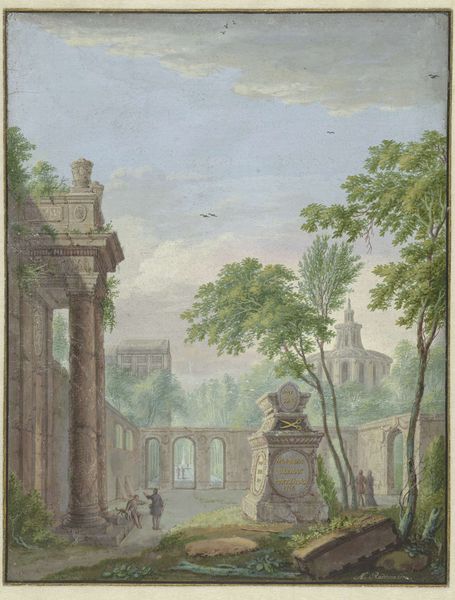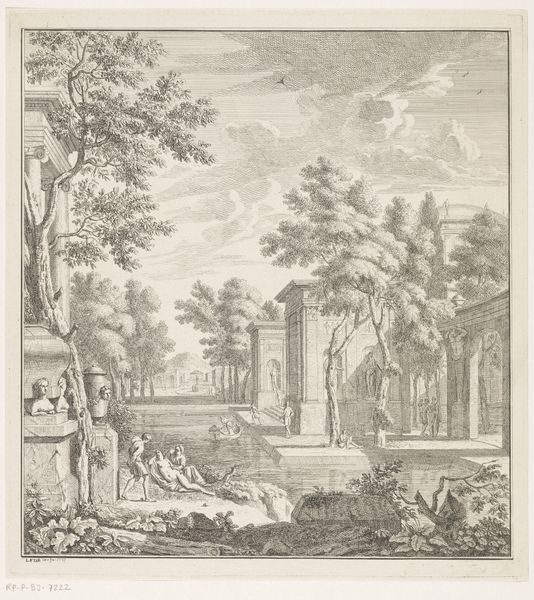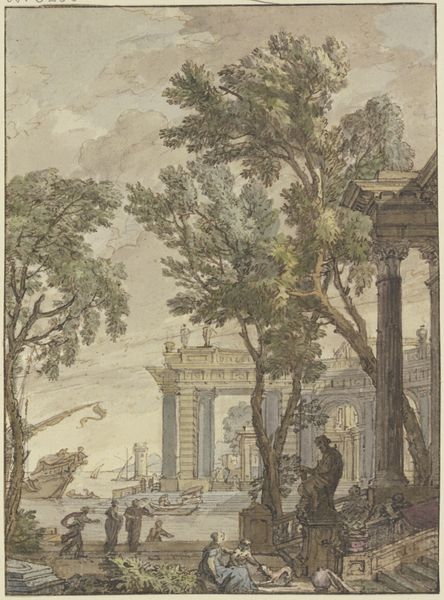
Gezicht op de ruïnes van de Boog van Constantijn en het Colosseum te Rome 1759
0:00
0:00
jeandaulle
Rijksmuseum
painting, watercolor
#
water colours
#
painting
#
landscape
#
watercolor
#
cityscape
#
italian-renaissance
#
watercolor
#
rococo
Dimensions: height 355 mm, width 507 mm
Copyright: Rijks Museum: Open Domain
Editor: So, this is "Gezicht op de ruïnes van de Boog van Constantijn en het Colosseum te Rome," a watercolor painting by Jean Daullé from 1759. The crumbling ruins juxtaposed with figures in the foreground give me a sense of time and history. How do you interpret this work, seeing as it focuses on this particular architectural landscape? Curator: Consider the material reality behind this image. Look at the painstaking labor required to create this detailed watercolor. Daullé meticulously renders each brick and stone. The pigments themselves, how were they sourced? What socio-economic structures enabled their production and trade in 1759? Are we looking at a straightforward representation of Rome, or is it a carefully constructed commentary on labor and value? Editor: That's a great point. It wasn't just about painting what was there, but it’s almost like documenting or even showcasing the transformation of raw materials – the stone, the pigments, and the paper - into something new and potentially precious? Curator: Precisely. Think about the Rococo period too; there’s this deliberate shift towards ornamentation and a celebration of skill. How does the commercial value of a Rococo-era landscape intersect with its perceived aesthetic value today? Editor: So the ruins themselves become a spectacle, commodities within this larger system of artistic production and consumption. The labor involved in portraying them actually enhances their market value. Curator: Indeed. And the consumption of such images reinforced societal hierarchies, with wealthy patrons commissioning and possessing these works, demonstrating not just wealth, but also cultural capital and power. The labor of many is subtly packaged for consumption by a few. What does it mean for an artist now, using cheap digital software, to imitate the output of Daullé? Editor: It highlights how art production has changed so fundamentally due to evolving access to, and consumption of, resources and materials! Thanks, that really makes me rethink my initial interpretation! Curator: It’s always about tracing the object back to its origins.
Comments
No comments
Be the first to comment and join the conversation on the ultimate creative platform.
